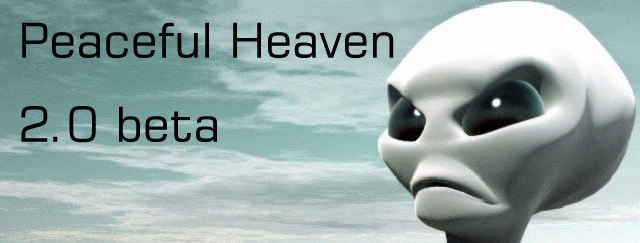Structure of an aeroplane(3)
Peaceful Heaven :: Free up zone. :: Hobbies :: 飛機跑道-Here
Page 1 of 1
 Structure of an aeroplane(3)
Structure of an aeroplane(3)
| RECIPROCATING ENGINE Page 1-27 |
The seven major parts are:
|
| PISTONS Page 1-27 & Figure 1-35 |
| In a reciprocating engine, the pistons are attached to the crankshaft by the connecting rod. NOTE: Review the crankshaft, connecting rod, and piston arrangement in Figure 1- 35 of the text. |
| FOUR-STROKE FIVE-EVENT CYCLE Page 1-28 & Figure 1-36 |
 |
| During the intake stroke, the intake valve opens and the vacuum causes a mixture of fuel and air to be drawn into the cylinder. |
 |
| During the compression stroke, fuel and air mixture is compressed. |
 |
| During the power stroke, both valves are closed and the spark plug ignites the fuel-air mixture, which explodes, forcing the piston down. |
 |
| During the exhaust stroke, the exhaust valve is opened and the burned gases are forced out. They flow out through the muffler and the exhaust pipe. |
| AIRCRAFT SYSTEMS Page 1-31 |
| The carburetor in the aircraft's engine mixes the aviation gasoline with air for the most desirable combination for ignition and burning. |
| On the majority of modern aircraft, fuel tanks are located in the wings. Fuel is forced from the tanks into the carburetor where it is mixed with air and drawn into the intake manifold and cylinders. |
| Fuel Lines - There is usually one fuel line leading from each fuel tank to the engine |
| Fuel Pump - feeds fuel under positive pressure to the engine. |
| Fuel injection replaces the carburetorin some engines. Fuel is injected directly into the combustion chamber. Since fuel injected engines have no carburetor, they do not suffer from carburetor icing. |
| IGNITION SYSTEM Page 1-33, 1-34 & Figure 1-41 |
| The ignition system in a reciprocating aircraft engine is actually a double system with two magnetos, two distributors. Each cylinder has two spark plugs. To ignite the fuel and air mixture in the cylinder chamber, the mixture receives an electrical spark. The magneto provides the electrical charge to the spark plug. |
| LUBRICATION SYSTEMS Page 1-35 |
| The primary function of a lubrication systems is to reduce fiction. |
| It also helps to cool the engine. |
| Seal various clearances in the engine. |
| Clean the engine. |
| COOLING SYSTEMS Page 1-35 |
| All reciprocating engines generate heat; therefore, they need cooling systems to keep the engine from overheating. |
| There are two types of cooling systems: water cooling and air cooling systems. |
| Modern aircraft reciprocating engines use an air-cooling system. |
| ENGINE INSTRUMENTS |
| The three basic engine instruments are: |
|
|
|
| PROPELLERS Page 1-38 | |
 | The propeller converts energy from the engine into forward thrust. It has an airfoil cross-section. The wing provides lift upward while the propeller (an airfoil) provides lift forward (thrust). |
| AIRCRAFT TURBINE AND RAMJET ENGINES Page. 1-39 & through 1-41 |
  |
| Turbojet Engines The turbojet uses a series of fan-like compressor blades to bring air into the front of the engine and compress it (two-stage compressor section). Compressed air then flows rearward into combustion chambers where fuel is mixed with the air and ignited (burner section). Hot high-velocity gases then leave the burner section, passing through and spinning a turbine wheel (turbine section). This wheel drives the compressor at the front of the engine. The hot gases exit the turbine into the exhaust section which is shaped to give additional acceleration to the gases and increase the thrust of the engine. |
| The thrust output of the engine is regulated by a fuel control (controlled by the pilot's throttle) which meters fuel to the burner section. The more fuel that is sprayed into the burner section combustion chambers, the more thrust produced at the exhaust section. The turbojet has few moving parts and is very reliable. |
| Some turbojet fighter aircraft are also equipped to inject more fuel into the hot exhaust gas flow to gain even more exhaust gas acceleration and a dramatic increase in thrust when required. This mechanism is called an afterburner and produces the lovely blue flame you see as the F-16 rotates for an evening takeoff. The afterburner burns an enormous amount of fuel and is therefore used only when very high thrust is required, e.g., during takeoff. |
 |
Turbofan engines are an improvement over the older turbojet engine and have better all-around performance at a lower rate of fuel consumption, plus less noise resulting from its operation. Some advantages of a Turbofan engine are:
|
 |
| The turboprop engine is a successful effort to combine the best features of turbojet and propeller aircraft. In turboprops, a turbine engine drives a propeller. |
| The ramjet engine is the simplest type of the all-jet engines because it has no moving parts. However, a ramjet engine will not operate until it is first moving rapidly through the air. For this reason the ramjet engine has a limited application. |
| NAVIGATION Page 1-43 |
| Navigation requires the accurate measurement of: direction,distance, and time. |
| Distance is measured on the map by using the map's scale. Direction is determined using by a compass. Time is measured by using a clock. |

alan200994- Admin
- Number of posts : 607
Age : 29
Location : http://www.xanga.com/alan200994
Registration date : 2008-10-30
Character sheet
Lucky field:


 (1/1)
(1/1) -

 Similar topics
Similar topics» Structure of an aeroplane(1)
» Structure of an aeroplane (2)
» Structure of an aeroplane(4)
» Structure of an aeroplane(5)
» Structure of an aeroplane (2)
» Structure of an aeroplane(4)
» Structure of an aeroplane(5)
Peaceful Heaven :: Free up zone. :: Hobbies :: 飛機跑道-Here
Page 1 of 1
Permissions in this forum:
You cannot reply to topics in this forum|
|
|


